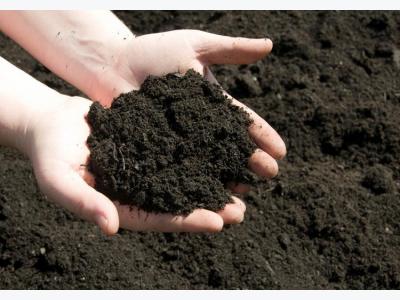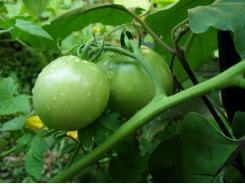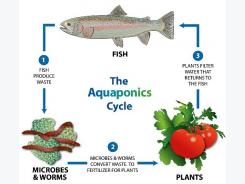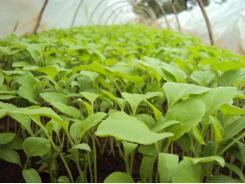Preserving Fertilizers and Additives – How to Keep them from Going Bad

When you prepare your own hydroponic nutrient solutions and you are finally happy with the way in which you have been mixing your nutrients and additives you start to notice that something murky is starting to develop from the top of your container. When you open up your nutrients or additives you then find a very happy fungi colony living in perfect harmony with your nutrients, eating away all the useful things you added and filling your solution with possibly toxic substances that will likely affect your plants later on. When microorganisms develop within nutrient solutions you are done, you need to dump them and start over since the living things that lived within them might have damaged, changed or added substances to your solution that you do not want in your reservoir. How do we prevent this problem ? What magic substances can we add to preserve our nutrients and additives ? On today’s post I will talk about how nutrient solutions and additives (especially those with sugars) are damaged, why this happens and how you can add some little harmless substances to fight these horrible plagues.
Nutrient solutions are made for plants so you could in fact assume that there is nothing that can grow within them that is not a photosynthetic organism. Most of the time you will be right – especially for solutions with no chelates – since the nutrients are not useful from an energetic standpoint to other organisms such as bacteria and fungi. However one day you open up a concentrated solution and find out a large mass of a gooey substance living within it, what went wrong ? The most common explanation to this problem is that your nutrient solution contains a chelating agent – such as EDDHA, EDTA or DTPA – which are organic molecules that wrap themselves around ions. Since these organic molecules contain carbon-carbon and carbon-hydrogen bonds they are indeed energetically useful for living organisms, especially to some fungi that love to eat chelates and -as a matter of fact – enjoy them better when they are within a soup of highly concentrated iron and other metallic ions.
The second case is even worse which is when you develop an additive that has some very enjoyable food – like some sugar – within it. When you dissolve glucose or other carbohydrates within water you are providing the most useful and delicious meal for any microscopic organism. Fungi, bacteria and protozoa will feed from this solution to the point where it will become filled and vibrant with life. Preparing a sugar additive is like putting a piece of cake next to an ant hill, it would be wishful thinking to believe that it will remain intact. The same thing happens when you develop buffers with organic molecules – such as MES or citric acid – or other types of additives that use amino acids, vitamins, etc. If it has carbon-carbon and carbon-hydrogen bonds some little thing is going to creep inside your bottle and have a feast. Only the air that gets trapped inside the bottle when you prepare the solution already contains a ton of fungi spores, bacteria, etc.
How do we prevent this from happening ? Well thanks to the developments the food industry has had during the past century we are able to add a little of a few substances that will absolutely prevent the development of any of those nasty things within our solutions. These magic substances that make food remain edible after long periods of time – which can also aid you to save your solutions – are called preservatives and they are cheap and harmless substances when used at the right concentrations. The large majority are approved for their use in the food industry – probably they are contained in everything you eat at the supermarket – and therefore they are perfectly safe to use within your hydroponic crops.
To make things simple you can just add a single substance that will prevent – for a long period of time – the development of nasty organisms within your hydroponic concentrated solutions and additives. This substance is used by most commercial hydroponic solution sellers but it is almost never listed as they are not required to do so by law since the substance is considered generally safe and its disclosure is not necessary when the products used are not intended for human consumption. This substance is called sodium benzoate, a substance derived from benzoic acid which has the magic power to keep nasty organisms away from your hydroponic solutions and additives.
How much do you need to add ? Not that much ! Only 100-300 mg/L of sodium benzoate within your concentrated solutions or additives should keep away most fungi and bacteria, allowing you to use your solutions for more extended periods of time without those nasty organisms having a party with your nutrients. However you need to make sure that your concentration remains below 400 mg/L and that your solution uses a 1:100 or higher concentration rate since the concentration of benzoic acid within the final hydroponic solution must remain below 25*10^-6 M in order to prevent phytotoxic effects. Hopefully with this advice you will now be able to prepare many additives and solutions without having to worry about your liquid preparations going bad a few days after you prepare them :o)
Related news
Tools

Phối trộn thức ăn chăn nuôi

Pha dung dịch thủy canh

Định mức cho tôm ăn

Phối trộn phân bón NPK

Xác định tỷ lệ tôm sống

Chuyển đổi đơn vị phân bón

Xác định công suất sục khí

Chuyển đổi đơn vị tôm

Tính diện tích nhà kính

Tính thể tích ao




 Truly Cleaning Your Hydroponic System : The Fenton…
Truly Cleaning Your Hydroponic System : The Fenton…  Seedling transplant tolerances and germination characteristics
Seedling transplant tolerances and germination characteristics